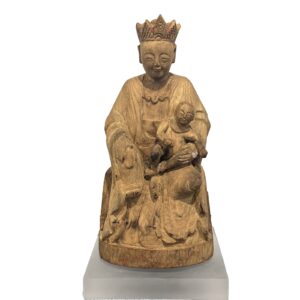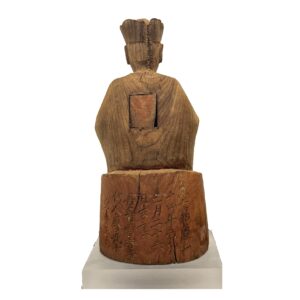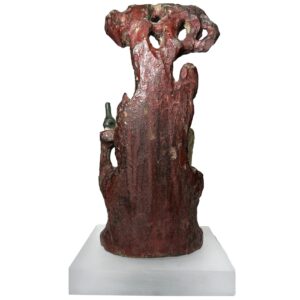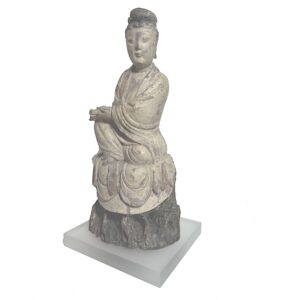-
Sale!


$1,350.00 Original price was: $1,350.00.$1,100.00Current price is: $1,100.00.
H: 11” W: 5.75” D: 5.125” | FREE SHIPPING WITHIN CONTINENTAL U.S.
Very rare and fine 16th century home shrine image with compassionate countenance of Songzi Guanyin the “Bestower of Children.” With joyful half-closed eyes, she looks lovingly at the child whose arm is draped over hers.and leans slightly forward.Wearing a 5- lobed crown centered with a camellia flower a Chinese symbol of young sons and daughters. Inscription dates it to 1521-1567
-


$620.00
This Nanhai Guanyin (Guanyin of the South Sea) sits in her cave on Putuo island in the South China Sea with most of her traditional features. She is portrayed as White Hooded or Clad Guanyin with her hair in a bun covered with a short hood seated in royal ease (lalitsana) with her right hand…
-


$1,550.00
This outstanding delicately antique carving is Nanhai Guanyin, the Bodhisattva of Compassion, seated on a rocky outcrop covered with a cloth, a reference to her home in a cave on the island of Putuo in the South China Sea. Other than the Buddha, she is the most revered deity in Mahayana Buddhism and one of…
End of content
End of content






